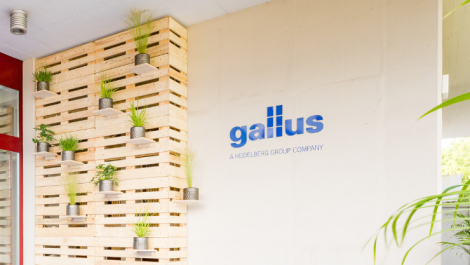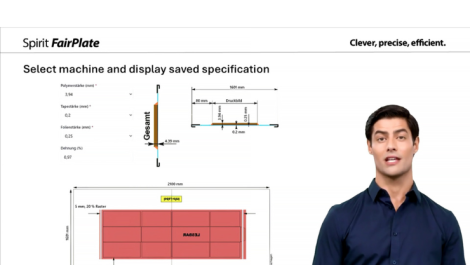Following the completion of a comprehensive new print trial, XSYS and Nilpeter have shown that there is no compromise in print quality when switching from solvent to thermal flexo plates.
A sample job was printed, in turn, with the solvent nyloflex FTS plate and the thermal nyloflex XVH plate from XSYS. The thermal plate was processed with a nyloflex Xpress thermal processor, which is claimed to offer considerable sustainability benefits compared to standard solvent processing systems in use.
Both are inherent flat top dot plates with a smooth surface that has a very fine grain, making them able to hold customised surface screening patterns, such as Woodpecker. They also both feature good wettability and anti-ink fill-in (AIF) technology, which keeps plates clean for longer print runs to allow increased press uptime. The thermal nyloflex XVH, however, offers additional benefits, most notably in sustainability by not requiring solvents for processing and thereby avoiding VOC emissions in the print room and further into the atmosphere. Productivity is also significantly increased as the nyloflex Xpress thermal processor delivers print-ready nyloflex thermal plates in less than one hour, which translates to 88% lower energy consumption. It also eliminates the long drying times experienced with solvent systems, which often cause a bottleneck in production and delay press restart when damaged plates have to be replaced.
The print trials were conducted at the Nilpeter Technology Center in Denmark, where the sample jobs were produced on an FA-17 narrow web flexo press running at 200m/min. The same design was printed on three different substrates – a 38-micron white BOPP, a self-adhesive white PE, and a 45-micron PET shrink material. UV flexo inks from Flint Group Narrow Web were used.
Friedrich von Rechteren, global commercial vice president at XSYS, explained, ‘Our main aim with this print trial is to confirm that there is no compromise in print quality when switching from XSYS solvent plates to thermal. In fact, what we found is that besides producing excellent print quality and improving flexo’s green credentials, the versatile nyloflex XVH thermal plate – like the solvent nyloflex FTS – also reduces complexity, inventory, and waste to provide a higher overall equipment efficiency (OEE).’
Jesper Jørgensen, global sales manager at Nilpeter, said, ‘When we compared the results from the two different plates, there was no difference in quality or registration – it was just spot on. With most new jobs, there are always some start-up difficulties getting the plates, the inks, and the material to mix and match together, but we found it surprisingly easy. It was a walk in the park.’
XSYS and Nilpeter, together with Reproflex Scandinavia, have already collaborated to leverage each company’s strengths in delivering flexo print options for tags and labels.
Mr von Rechteren concluded, ‘We continue to investigate ways in which printers can improve their process to make it more efficient and productive, and we do that by partnering with other leading manufacturers in our industry to offer the best solutions to our customers. Sustainability is one of the biggest drivers in today’s market, so naturally we have a very strong focus on finding ways to produce eye-catching print without negatively impacting the environment.
‘We can now fully recommend the nyloflex XVH plate as an alternative solution to current market challenges, because it delivers print quality that equals solvent plates, offers reduced TCO, and is more environmentally friendly.’






